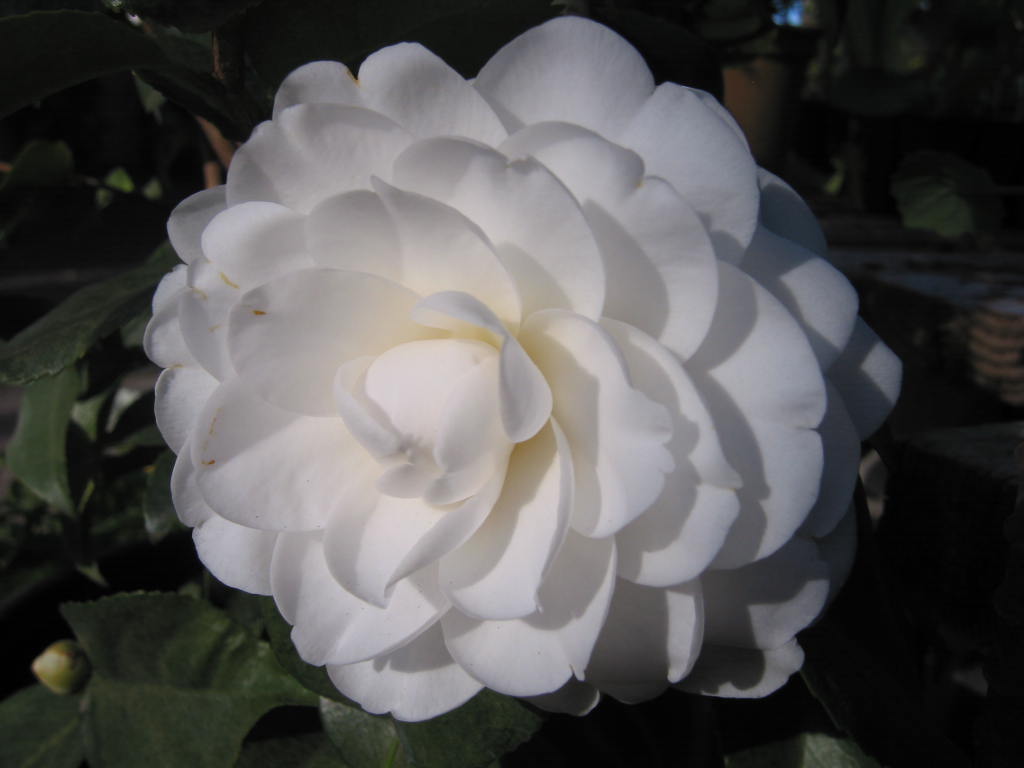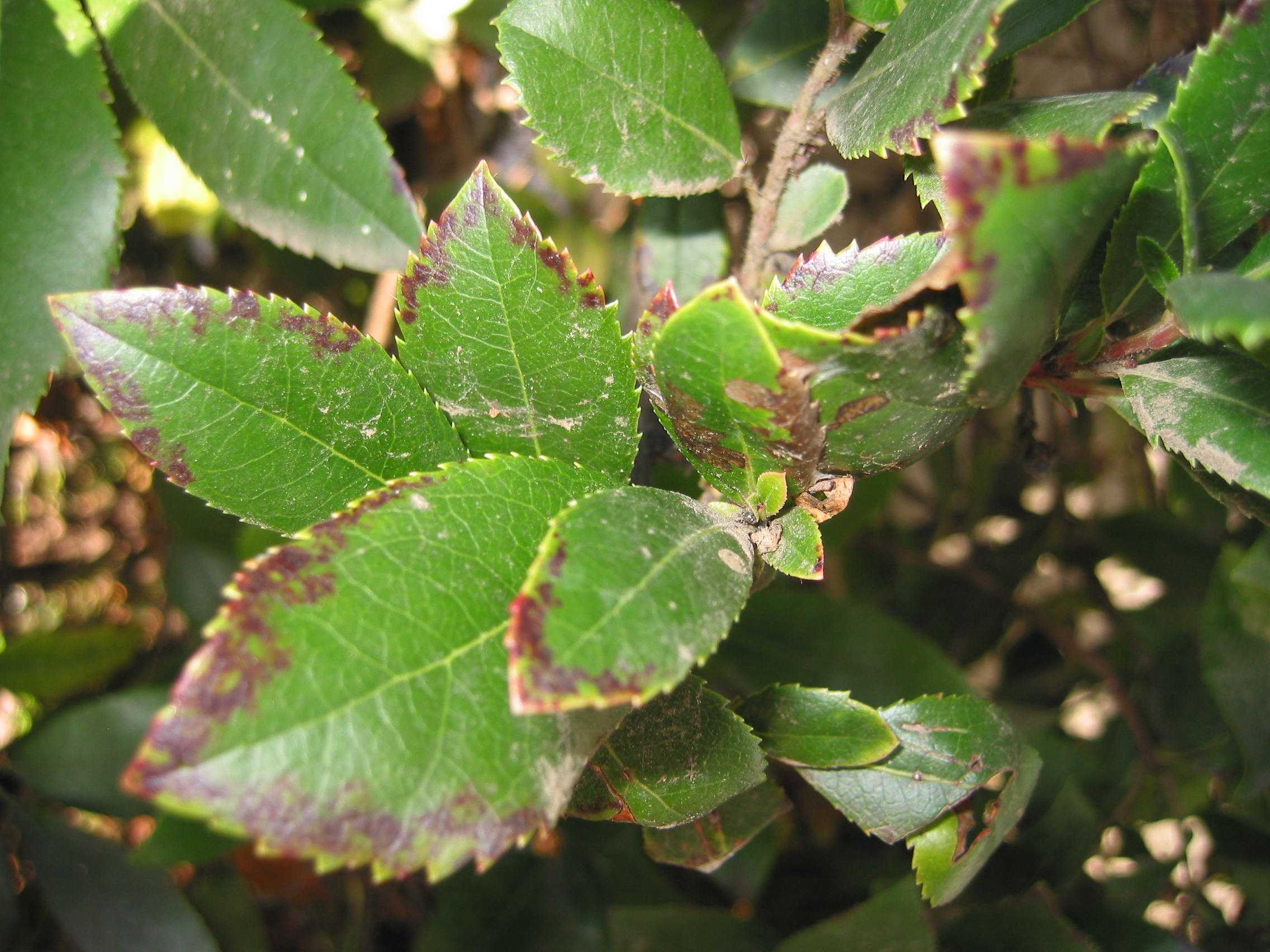Growing acid-loving plants
Written for the Davis Enterprise, December 24, 2008
February 7, 2010: A great article in the Sacramento Bee prompted a flurry of phone calls to our nursery -- can we really grow blueberries here? Here are the issues for gardeners in Davis, Woodland, Dixon, and other communities that rely on groundwater for irrigation. Water from wells is hard and has a high pH.
Oh, those acid-loving plants.
Camellias are the queen of the winter garden - in Sacramento. Azaleas mean spring. Can we grow blueberries? How about true blue hydrangeas? What does "acid-loving plant" mean, anyway?
The issues with Davis water.
What's the problem? Water in Davis and Woodland is alkaline, meaning it has a high pH, which causes deficiencies of some minerals essential for green leaves and plant growth. When the leaves are yellow between the veins, the plant is deficient in iron. When that yellowing is blotchy, it is lacking magnesium. When the new leaves are smaller than they should be, it is lacking zinc. The water is high in certain salts, which can cause ugly burnt edges on the leaves of some plants.
Note: it isn't always pH that is the problem. Overwatering can damage roots of plants, so they can't take up the minerals. When we see deficiencies on common landscape shrubs such as Escallonia and Nandina, we suspect overwatering.
What are these finicky plants?
Group 1: we can grow these with special soil amendments and additives. If you don't fertilize them regularly and/or treat the soil with pH reducers, they will get anemic and fail to thrive.
 'Alba Plena' is a Japanese camellia variety that has been grown for over 200 years.
'Alba Plena' is a Japanese camellia variety that has been grown for over 200 years.
o Blueberries [Here is a list of popular blueberry varieties]
o Camellias
o Gardenias
o Hydrangeas (more on flower color below)
o Lesser-known ornamentals include Loropetalum and Pieris
o Some specialty conifers: Cryptomeria, Chamaecyparis
o Azaleas can get chronically anemic and are prone to crown rot, but may be successful for a couple of years.
o Japanese maples (Acer palmatum) prefer acidic soil conditions, but most of the leaf damage attributed to our water on these small trees is actually caused by hot, dry summer weather.
 'Yuletide', a Sasanqua camellia
'Yuletide', a Sasanqua camellia
Group 2: these shrubs and trees often show persistent deficiencies.
o Deciduous magnolias: Saucer magnolia (M. soulangeana), Star magnolia (M. stellata), and others. Deficiencies are common but correctible, and these are worth growing for the showy spring bloom.
o Citrus and rose leaves often show iron deficiency, and sometimes show magnesium and zinc deficiency.
Group 3: chronic deficiencies and leaf burn make these plants ugly. Not recommended.
o Dogwood (Cornus florida). Some species of Cornus grow here, but not these showy-flowered types.
o Rhododendrons.
o Sweetgum (Liquidambar styraciflua) and Sour gum (Nyssa sylvatica, also called Tupelo).
Soil chemistry: what's going on?
It isn't that the important minerals aren't present in the soil. Adding more iron, magnesium, or zinc won't correct the problem. As the soil gets more alkaline, they become insoluble.
One example. Iron is taken up by plants as a positive ion (Fe++) via ion exchange on the root surface. Hydroxide (OH-) is more abundant in alkaline soil. Hydroxide combines with the iron ions the plant needs, creating iron hydroxide (Fe(OH)2) - which the plant can't absorb.
Well-meaning gardeners can make the problem worse by applying too much fertilizer, or the wrong type. For example, excess phosphorus can make iron unavailable, and vice versa. It's easier to correct the soil pH than to try to add a specific mineral. Transplanted east-coast gardeners need to know that since lime raises soil pH, we don't apply it here at all.
So, what to do?
Make the soil more acidic. The technical term is to acidulate the soil.
Applying sulfur is the simplest way to go: elemental sulfur will react with soil microbes to produce sulfuric acid and hydrogen. While this happens fastest during warm weather, it's ok to apply sulfur any time of year.
For acid-loving shrubs and trees, add a couple of cups of soil sulfur to each planting hole, mixed thoroughly with the backfill soil at the time of planting. When treating an entire bed, apply 5 - 10 lbs. per 100 sq. ft. Mixing it in to the soil increases contact with the microbes, giving faster results than broadcasting it on the surface. Then to follow up, broadcast granular sulfur around established plants each season. Raking it in, or covering it with mulch, gets the soil microbes working on it faster.
Many fertilizers contain sulfur, indicated by the "sulfate" in the name or in the list of sources on the guaranteed analysis. Each has special uses, as well as possible drawbacks.
o It takes 8 times as much iron sulfate to achieve the same results as soil sulfur.
o Aluminum sulfate (used to turn hydrangeas blue), if used in large quantities, can lead to an excess of aluminum which can cause other nutrient deficiencies.
o Ammonium sulfate packs a wallop of nitrogen due to the ammonia content; this inexpensive lawn food, misused, has fried a lot of lawns via overdose!
Synthetic fertilizers labeled for acid-loving plants get most of their important nutrients from sulfate-based sources. Cottonseed meal is an excellent organic fertilizer that makes soil more acidic.
Adding organic material (i.e., compost) makes minerals available to plants by an indirect route. Decomposition of organic material creates humic acid, which loosely binds (the technical term is chelates) those important positive ions of iron, magnesium, etc., making them available for the plant roots. The humic acid keeps the iron and other ions from precipitating out into those insoluble forms.
So to counter the effects of a summer of watering with our hard alkaline water:
o You want the soil around the roots to be providing sulfuric acid and humic acid. Both of these are created slowly but steadily during warm weather when there is sulfur and organic material mixed in the soil.
o Additional sulfur and mulch can be put on the surface around established plants. Scatter sulfur and add a couple of inches of bark mulch each spring or summer.
o Leaves and pine needles can be spread around the plants in fall to decompose.
o Fertilizers containing sulfates can be applied per the package instructions during the growing season (read the label!), but don't rely exclusively on them to lower soil pH.
Miscellaneous remedies.
Weak vinegar solutions, and epsom salts (magnesium sulfate) are sometimes used, providing short-term correction to the pH. Some soil amendments are naturally low in pH: peat moss is widely used when planting camellias and azaleas, though it is a little pricey here since we are far from the peat bogs. Coffee grounds are helpful.
How about avoiding the hard water in the first place? Collecting enough rainwater to provide for a whole season isn't very practical, unless you build a cistern.
Toxicity: boron.
Boron gets blamed for a lot of the problems caused by high pH. "You can't grow camellias in Davis because of the boron!" Well, no: we can grow camellias with effort, and it is mostly just the alkaline water supply that is the problem. Boron is not our primary problem here.
Natural borax deposits in the soils of the coastal mountain range erode and dissolve into the creeks that replenish our ground water. Plants require boron in very small quantities, but it is toxic to some plants at high levels. It doesn't help that many fertilizer manufacturers, trying to include everything plants might need, add boron!
 Strawberry tree (Arbutus unedo) showing boron burn on the leaf margins.
Strawberry tree (Arbutus unedo) showing boron burn on the leaf margins.
Boron passes readily through the plant and accumulates in the leaves. It takes a couple of years for the boron to build up in the leaf to toxic levels, so deciduous plants drop their leaves before any damage is visible. The most common toxicity symptom is black edges on older leaves of certain broad-leaved evergreens; for example, on evergreen Magnolia (M. grandiflora) and strawberry tree (Arbutus unedo). It's ugly, but not harmful.
What to do? Boron is soluble. Water deeply and thoroughly. I know, I know: the water you are using contains more boron. But the problem results from shallow waterings, as from a drip system, leaving a buildup of boron salts in the root zone. These salts are often visible on the edge of the watering zone. A good long soak dissolves a bunch of that boron and carries it past the root zone. So does winter rainfall.
What's the deal with hydrangeas?
How does the soil make the flowers blue or pink?!
Ok, more chemistry. Some red and blue flower pigments have very similar chemical structures, and in the case of hydrangeas the molecule can undergo a reversible change in the plant based on the pH of the sap. When the soil around the plant's roots is alkaline, the plant sap becomes slightly alkaline, creating the pink pigment in the flower. When the soil is acidic, so is the plant's sap; the molecule sheds a couple of ions and becomes a different pigment - blue this time. If the pH is neutral, a different pigment is formed, this one mauve in color.
Because we are constantly watering hydrangeas with alkaline water here, it is a challenge to get the blue pigment in the plant as the flower buds are forming. Aluminum sulfate is used (in very small quantities) for this purpose because it causes a quick drop in soil pH. Sulfur added to the soil reacts too slowly to achieve the pigment change within a single season. Apply the aluminum sulfate as the shrub leafs out in the spring, and then again every couple of weeks until you see flower buds. Results vary.
Are there any plants that prefer an alkaline soil and water?
Plants native to arid climates tend to tolerate alkaline conditions. Many references indicate that lilacs also do, and they certainly grow well here.
City of Davis water quality reports are available online here
The pH of Davis water in 2007 averaged 8.3, Woodland 8.23.
7.0 is neutral, less than 7.0 is acidic, greater than 7.0 is alkaline.
© 2008 Don Shor, Redwood Barn Nursery, Inc., 1607 Fifth Street, Davis, Ca 95616
www.redwoodbarn.com
Feel free to copy and distribute this article with attribution to this author.
Click here for Don's other Davis Enterprise articles
